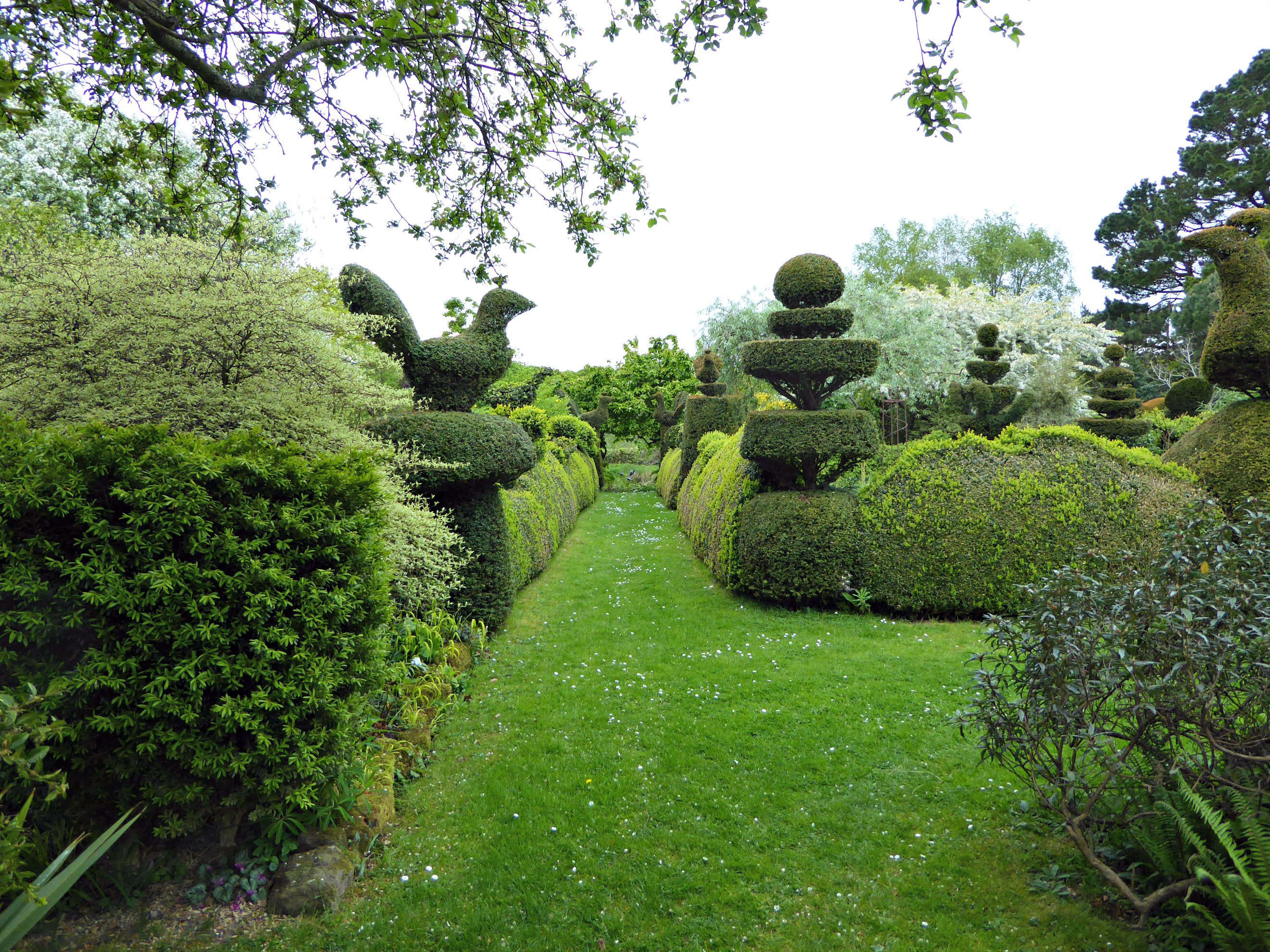The house and garden at Hemingford Manor are part of the local riverscape on the Great Ouse, Cambridgeshire. They also feature in a fictional one, the enchanted Green Knowe of Lucy Boston’s children’s books.
Benign spirits mingle with the living in the castle-like house. On visiting, it is a challenge to separate fact from fiction at this 12th-century dwelling, arguably the oldest inhabited house in England.
Photography by Jim Powell for Gardenista.

Above: A low wall divides the garden from passersby on the river. Water laps around the doorstep at the beginning of the first book in the series, The Children of Green Knowe; the last time this happened in real life was in 1947. When Lucy Boston arrived at Hemingford Manor in 1939, she set about restoring the cluster of buildings, the heart of which dates back to the 1130s.
The manor is lived in by Lucy’s daughter-in-law, Diana Boston, our very knowledgeable guide. Her husband was Lucy’s son Peter, an architect who also illustrated the Green Knowe books. Inheriting the immortalized house was, according to Diana, “like finding a difficult baby on your doorstep.”

Above: The gardens are laid out in semi-formal beds at the front and side of the house, and planted in a relaxed cottage style. Old roses abound, and running parallel to the moat at the front are ranks of irises, interplanted with Verbena bonariensis and veronicastrum.

Above: The Hidden Garden, not on view from the river, is near the oldest part of the house. There are intriguing trees, such as the apple which has fused with a crab apple, producing a simultaneous crop of separate fruits. Shown here, a spindle tree sports contrasting hues of foliage and berries against lichen.

Above: A particularly vibrant Ricinus communis, (the toxic castor oil plant) shown to best advantage against the grass Stipa gigantea. Though the house (which is open by appointment) is an obvious attraction, the gardens are just as intriguing, clearly tended by a keen plantswoman, with some part-time help.

Above: The newer part of the house (18th century), with some of the yew shapes planted by Lucy Boston and Diana. This particular topiary is a reference to the accommodating “castle of yew” in the books.

Above: An engraved birthday gift to Lucy Boston in the music room window. This room upstairs is the old hall, the nucleus of the original dwelling. During the war Lucy put its large gramophone to use, giving twice-weekly recitals to the RAF. Having lived “in all the music capitals of Europe,” she knew her stuff and the collection of old 78 rpm records, which are still played, is impressive.

Above: Lucy Boston began writing books when she was 60. Her work was recognized with a Carnegie Medal and she wrote six full-length stories about Green Knowe. They are delightful for adults and children alike. A visit to Hemingford is a way to explore the details of the book, for instance this creaking rocking horse and wicker bird cage.
“We always keep the window by the bird cage open a little,” says Diana. “So that the chaffinch can come in at night.” Clearly, we have dipped into the parallel universe, signs of which are all over the house.

Above: The view from the attic window over a giant chess set created from yew.

Above: Topiary on the lawn was laid out by Lucy Boston in the 1940s. She decided to give the yew a patriotic twist in 1952 to train it into crown and orb shapes to honor the Queen’s coronation.
Lucy was influenced by the gardens at Levens Hall, Cumbria, which she’d known as a child. Levens Hall is renowned for its curious and ancient topiary.

Above: “Green grow the rushes oh.” This traditional song appears in the books and preoccupations are watery. This channel forms part of the moat which circumvents the house through woodland and more formally planted areas.

Above: A more conventional way of arriving at the house, down the driveway. The tracks make it as unobtrusive as possible; even so, visitors are asked to park in the village and walk by the river to the house.

Above: The view from the garden gate.
We love to poke around in writers’ gardens. For more, see:
- Required Reading: Virginia Woolf’s Garden
- Eudora Welty: A Writer’s Garden in Mississippi
- The Poet and his Garden: Ian Hamilton Finlay in Scotland









Have a Question or Comment About This Post?
Join the conversation